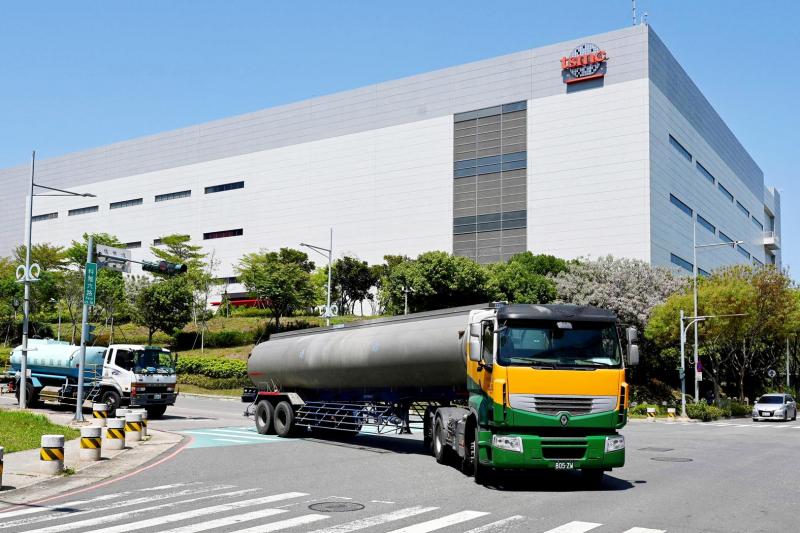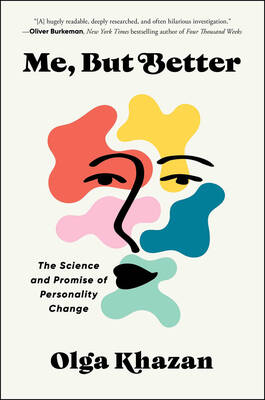In the foothills of Taiwan’s mountainous spine, reservoirs are running dry as the island experiences its worst drought in decades — a crisis that risks deepening an already acute global semiconductor shortage.
Taiwan is home to some of the world’s biggest and most advanced high-tech foundries, a linchpin of a global US$450 billion industry that provides the computing power for essential devices, but is extremely water-intensive.
The coronavirus pandemic sparked a global run on microchips as consumers snapped up electronics — causing a dearth that Taiwan’s microchip factories were struggling to plug even before the drought hit.

Photo: AFP
Those foundries are already running at full capacity trying to meet demand.
But the sudden lack of rain is making a bad situation worse for a manufacturing process that uses billions of gallons of water a year to stave off contamination of its products.
“From notebooks, monitors, TVs, smartphones, tablets to cars, there is an overall shortage of chips. We haven’t seen anything like this before,” said Eric Li, a spokesman for Himax Technologies, which designs chips used in screen displays.

Photo: AFP
Taiwan is one of the world’s wetter places, with an annual rainfall of 2,600 millimeters.
Typhoons regularly slam into the island from the east during the rainy season and replenish reservoirs.
But for the first time in 56 years, no typhoon made landfall in Taiwan last year.
And, during the first three months of this year, rainfall has been less than 40 percent of the usual rate.
In southern Taiwan, levels at the largest reservoir Tsengwen have fallen to a 15-year low at less than 12 percent capacity while the Baihe reservoir is completely dry.
WATER RATIONING
Earlier this month the government imposed water rationing for more than one million households and businesses in central Taiwan. Many farmers’ fields are having to go without and homes have taps cut off for two days a week.
The island’s three major science parks, where many leading tech companies are based, have been ordered to slash water usage by up to 15 percent.
“This has started to make semiconductor factories nervous when they have more semiconductor orders,” said Iris Pang (彭藹嬈), ING Bank NV chief economist for Greater China, who said the current chip shortage would probably last into next year and possibly into 2023.
“This is because demand is likely to rise along with the global recovery but building new production lines can be a slow process.”
Taiwan’s chip foundries are already struggling to meet soaring demand for semiconductors. In the car industry, which canceled many chip orders early in the pandemic, the crunch has got so bad that major automakers such as Ford, Nissan and Volkswagen have scaled back production, leading to estimates of some US$60 billion in lost revenue for this year. Taiwan Semiconductor Manufacturing Company (TSMC), the world’s largest contract microchip maker, has said it is operating at full capacity “with demand from every sector.”
Making semiconductors is a hugely water intensive process throughout the manufacturing process, from cleaning the chips themselves, keeping state of the art foundries hyper-sterile and washing away waste chemicals.
TSMC alone used 156,000 metric tons of water a day across Taiwan’s three science industrial parks in 2019 — the equivalent of 60 Olympic-size swimming pools.
The company is among chipmakers who have started trucking in water to its foundries and has played down concerns that the drought will further hit production.
“TSMC has always maintained contingency plans for each stage of water restrictions... So far there’s no impact on production,” it said in a statement.
This month TSMC said it was planning to invest US$100 billion over the next three years to build new production lines.
CONCENTRATION IN ASIA
Alan Patterson from industry magazine EE Times said water shortages were unlikely to seriously impact chipmakers at this point.
But there is a danger in “the potential overbooking of semiconductor orders.”
“Given the urgent need to secure supplies of chips, some companies may be ordering more supplies than they actually need,” he said. But a prolonged drought could start to hit manufacturing.
And some critics have urged Taiwan to dig more wells to make up for periods of rainfall shortages, especially as climate change leads to less predictable weather patterns.
The chip shortage has also focused attention on how the vast majority of semi-conductors — especially the thinnest ones vital for the latest 5G technologies — are made in just two places, Taiwan and South Korea.
TSMC has announced plans to build a new facility in Arizona as part of a push to diversify its global supply chain.
US chip rival Intel has also unveiled plans to spend US$20 billion building two new plants in Arizona as part of a plan to boost production at home and in Europe.
“Having 80 percent of all supply in Asia simply isn’t a palatable manner for the world to have its view of the most critical technology,” Intel chief executive Pat Gelsinger told the BBC.
“And the world needs a more balanced supply chain to accomplish that.”

Last week, the the National Immigration Agency (NIA) told the legislature that more than 10,000 naturalized Taiwanese citizens from the People’s Republic of China (PRC) risked having their citizenship revoked if they failed to provide proof that they had renounced their Chinese household registration within the next three months. Renunciation is required under the Act Governing Relations Between the People of the Taiwan Area and the Mainland Area (臺灣地區與大陸地區人民關係條例), as amended in 2004, though it was only a legal requirement after 2000. Prior to that, it had been only an administrative requirement since the Nationality Act (國籍法) was established in

Three big changes have transformed the landscape of Taiwan’s local patronage factions: Increasing Democratic Progressive Party (DPP) involvement, rising new factions and the Chinese Nationalist Party’s (KMT) significantly weakened control. GREEN FACTIONS It is said that “south of the Zhuoshui River (濁水溪), there is no blue-green divide,” meaning that from Yunlin County south there is no difference between KMT and DPP politicians. This is not always true, but there is more than a grain of truth to it. Traditionally, DPP factions are viewed as national entities, with their primary function to secure plum positions in the party and government. This is not unusual

The other day, a friend decided to playfully name our individual roles within the group: planner, emotional support, and so on. I was the fault-finder — or, as she put it, “the grumpy teenager” — who points out problems, but doesn’t suggest alternatives. She was only kidding around, but she struck at an insecurity I have: that I’m unacceptably, intolerably negative. My first instinct is to stress-test ideas for potential flaws. This critical tendency serves me well professionally, and feels true to who I am. If I don’t enjoy a film, for example, I don’t swallow my opinion. But I sometimes worry

US President Donald Trump’s bid to take back control of the Panama Canal has put his counterpart Jose Raul Mulino in a difficult position and revived fears in the Central American country that US military bases will return. After Trump vowed to reclaim the interoceanic waterway from Chinese influence, US Defense Secretary Pete Hegseth signed an agreement with the Mulino administration last week for the US to deploy troops in areas adjacent to the canal. For more than two decades, after handing over control of the strategically vital waterway to Panama in 1999 and dismantling the bases that protected it, Washington has